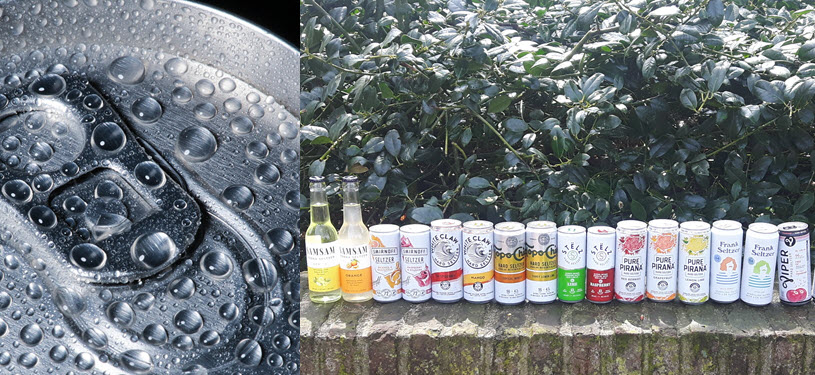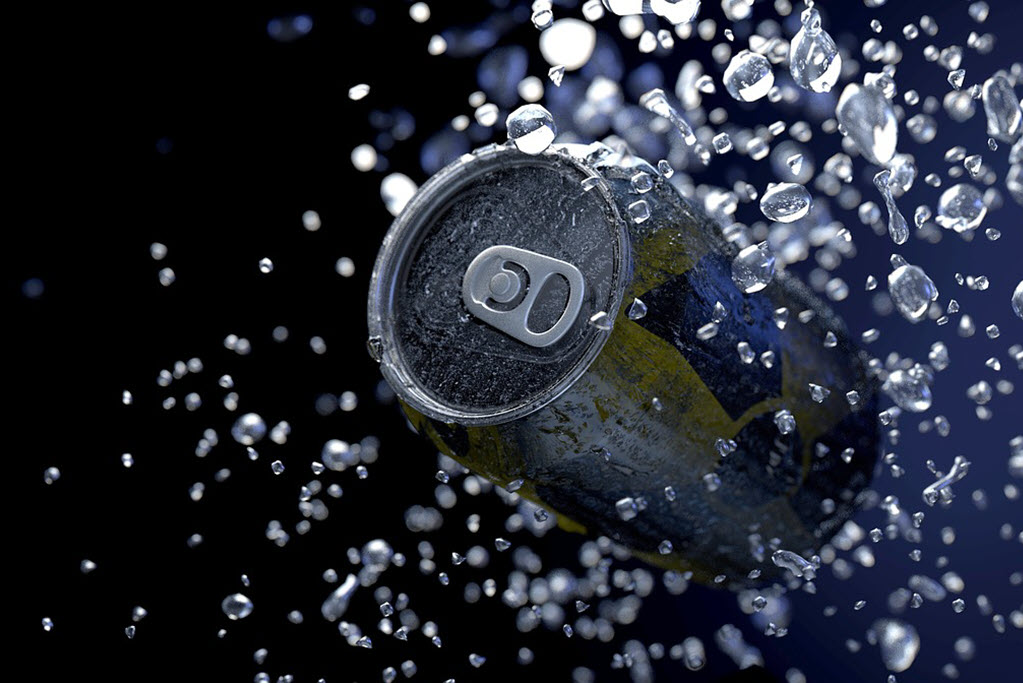
Hard seltzer also known as spiked seltzer, alcoholic seltzer, or hard sparkling water is a flavored carbonated combined beverage containing alcohol. They are low Alcohol-by-Volume (ABV) beverages available in different flavors, such as citrus fruits, tropical fruits, and berries. They are typically clear and colorless, although some have hints of color and feature low calorie content adding to the popularity amongst health-conscious consumers.
Hard seltzers were first introduced in the United States in 2013. The category has seen steady growth along with the Ready-to-Drink (RTD) category ever since. Brands in the category include White Claw Hard Seltzer, Spiked Seltzer, Bud Light Seltzer, Truly Seltzer, Corona Hard Seltzer, and Smirnoff Spiked Sparkling Seltzer.
Unlike bourbon or rye whiskies that require years of aging they are more like a vodka or rum that can be produced, packaged and sold immediately making them very attractive to startup businesses.
A recent research study on “Hard Seltzer Market Forecast to 2028 – COVID-19 Impact and Global Analysis by Flavor (Citrus Fruits, Berries, Tropical Fruits, and Others), Packaging Type (Bottles and Cans), and Distribution Channel (Supermarkets and Hypermarkets, Specialty Stores, Online Retail, and Others)”, published by The Insight Partners shows the rising popularity of low-calorie and low-alcohol beverages coupled and the growing preference for ready-to-drink (RTD) beverages are the key factors driving the growth of the hard seltzer market.
In 2020, North America held the largest share of the global hard seltzer market, and Asia-Pacific is estimated to register the fastest CAGR in the market during the forecast period. According to ISWR Drinks Market Analysis, the ready-to-drink (RTD) category—including hard seltzers—accounted for the highest rise in consumption in the US in 2020. Due to hectic lifestyles and busy schedules, people in North America prefer products in RTD packaging, which are ideal for on-the-go consumption. Moreover, the rising demand for low-alcohol content and low-sugar content beverages is also propelling the market growth in the region. Further, the high influence of social media platforms and celebrities is projected to open significant growth opportunities for the hard seltzer brands over the coming years.
Hard Seltzer Market Size Projected to Reach $4,355.46 Million by 2028
| Report Coverage* | Details |
|---|---|
| Market Size Value in | US$ 2,500.82 million in 2021 |
| Market Size Value by | US$ 4,355.46 million by 2028 |
| Growth rate CAGR | 8.2% from 2021 to 2028 |
| Forecast Period | 2021-2028 |

Stay Informed: Sign up here for the Distillery Trail free email newsletter and be the first to get all the latest news, trends, job listings and events in your inbox.
Hard Seltzer Market: Competitive Landscape and Key Developments
A few players operating in the hard seltzer market include Anheuser-Busch INBEV; Constellation Brands, Inc; Heineken N.V.; Kona Brewing Co.; Kopparberg; Lift Bridge Brewing Co.; Mark Anthony Brands International; Molson Coors Beverage Company; Oskar Blues; and The Boston Beer Company.
These companies are investing in promoting their products through social media and by launching outdoor marketing campaigns to enhance their brand awareness. For instance, Truly, launched the “No One is Just One Flavor” campaign in May 2021 for promoting new flavors of its beverages by collaborating with the Grammy Award-winner pop singer Dua Lipa. This campaign was channeled through out-of-home (OOH), and digital and social-media marketing. The campaign included a point-of-sale counter with prize giveaways and a live-streaming concert. The campaign reflected positive results and led to an increase in the brand’s popularity among a wide range of consumer groups.
Asia-Pacific is projected to register the fastest CAGR in the hard seltzer market during the forecast period. The food & beverages industry is an essential part of the economies such as India, China, Japan, Australia, among others. The high availability of functional food and drinks and their growing demand among the millennial population are significantly driving the growth of the hard seltzer market across Asia-Pacific. Moreover, the market is expanding with changing lifestyles with the increasing influence of western culture on the region. Also, the market growth is also ascribed to the increasing influence of social media on buying behavior and consumption patterns in the region.
Innovative Seltzer Flavors and Attractive Marketing Campaigns by Prominent Players Boost Market Growth
Manufacturers are heavily investing in the launch of hard seltzers with new flavors. Although hard seltzers are known for their fruity flavors, several manufacturers have introduced hard seltzer with flavors other than fruity flavors. For instance, the Evil Water range of hard seltzers from Evil Twin Brewing includes hard “pastry” seltzers with flavors such as chocolate egg cream and gummy bears. Consumers prefer experimenting with flavors.
Manufacturers of hard seltzers are promoting their products on social media platforms, such as Instagram and Facebook, for increasing brand recognition and customer reach. For instance, Truly, a popular hard seltzers brand, teamed up with GLAAD, a nonprofit organization, and launched a social media and out-of-home (OOH) advertising campaign in May 2020. The campaign encouraged customers to upload images of themselves celebrating pride with a can of Trull’s hard seltzers using the hashtag “TrulyPride” on social media platforms to show support for the LGBTQ community. Such social media campaigns by prominent market players, coupled with the influence of such campaigns on people, are major factors expected to boost the growth of the hard seltzers market in the future.
Hard Seltzer Market: Segmental Overview
By flavor, the hard seltzer market is segmented as citrus fruits, berries, tropical fruits, and others. The tropical fruits segment is projected to register the fastest CAGR during the forecast period. Tropical flavors are becoming increasingly popular among consumers owing to their sweet and tart taste, nutritional profile, and beautiful colors. Moreover, tropical fruits such as kiwi, watermelon, and passionfruit are gaining traction among consumers, and hence, manufacturers are launching a wide range of products with these flavors. For instance, Vizzy, a hard seltzer brand of Molson Coors Beverage Co., recently launched new hard seltzer flavors in the tropical fruits category such as kiwi and watermelon, and passion fruit and watermelon.
By packaging type, the hard seltzer market is segmented into bottles and cans. The bottles segment is expected to register a higher CAGR in the hard seltzer market during the forecast period. Bottles made of polyethylene terephthalate (PET) and glass are generally used for packaging hard seltzers. PET bottles are easily customizable, transportable, leak-proof, and recyclable, making them a sustainable packaging alternative. Manufacturers of hard seltzers use bottles of different shapes, sizes, and unique prints to attract customers. Moreover, to enhance product appeal, they are launching attractive glass bottles with improved durability, which is further anticipated to aid the segment’s growth in the coming years.
Based on distribution channel, the hard seltzer market is segmented into supermarkets and hypermarkets, specialty stores, online retail, and others. The supermarkets and hypermarkets segment accounted for the largest market share in 2020. Manufacturers of hard seltzers usually prefer selling their products through supermarkets and hypermarkets owing to heavy customer footfall. Moreover, these stores offer attractive discounts, multiple payment options, and a pleasant customer experience. The stores have modern storage facilities that ensure ideal storage conditions for hard seltzers. Many leading manufacturers of hard seltzers sell their products through well-known supermarkets such as Walmart, Kroger, and Lidl to leverage their customer reach and wide distribution network.
Impact of COVID-19 Pandemic on Hard Seltzer Market
The COVID-19 pandemic has affected economies and industries in various countries due to lockdowns, travel bans, and business shutdowns. The food & beverage industry is one of the major areas suffering serious disruptions such as supply chain breaks and shutdowns of production plants. During the initial phases of the pandemic, various companies announced possible delays in product deliveries and slump in future sales of their products. In addition, the global travel bans imposed by countries in Europe, Asia, and North America hampered business collaborations and partnership opportunities.
Demand for hard seltzer remained steady even during the lockdowns as they can be conveniently consumed anywhere due to their RTD packaging format. Moreover, as people remained inside their homes, they preferred in-house consumption of a variety of beverages, which favored the demand for hard seltzers. However, severe supply chain disruptions led triggered a demand–supply gap, which harmed the market growth. Nevertheless, with rising rates of vaccination and relaxations in social restrictions regulations imposed by governments of different countries, the global hard seltzer market began recovering from losses. This factor is projected to provide growth opportunities for the hard seltzer market players in the coming years.
* Source: The Insight Partners
Please help to support Distillery Trail. Sign up for our Newsletter, like us on Facebook and follow us on Instagram and Twitter.




